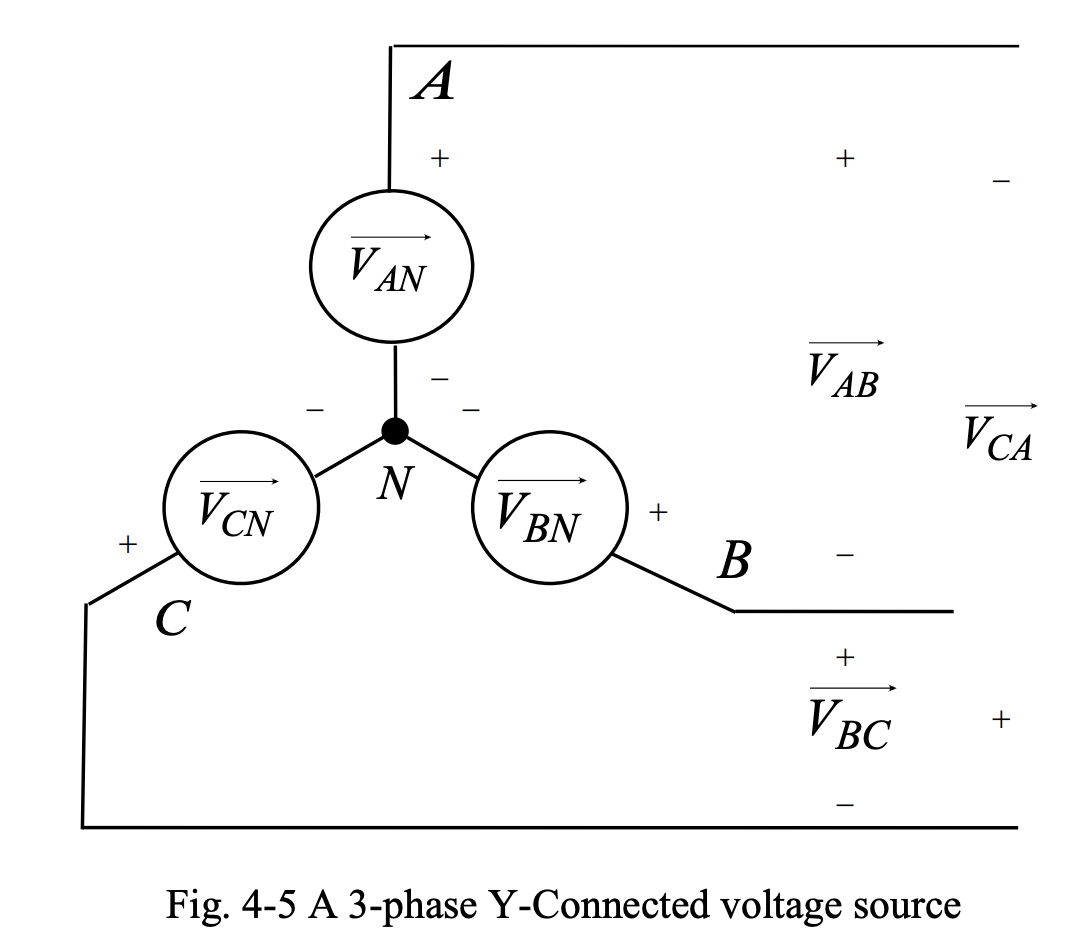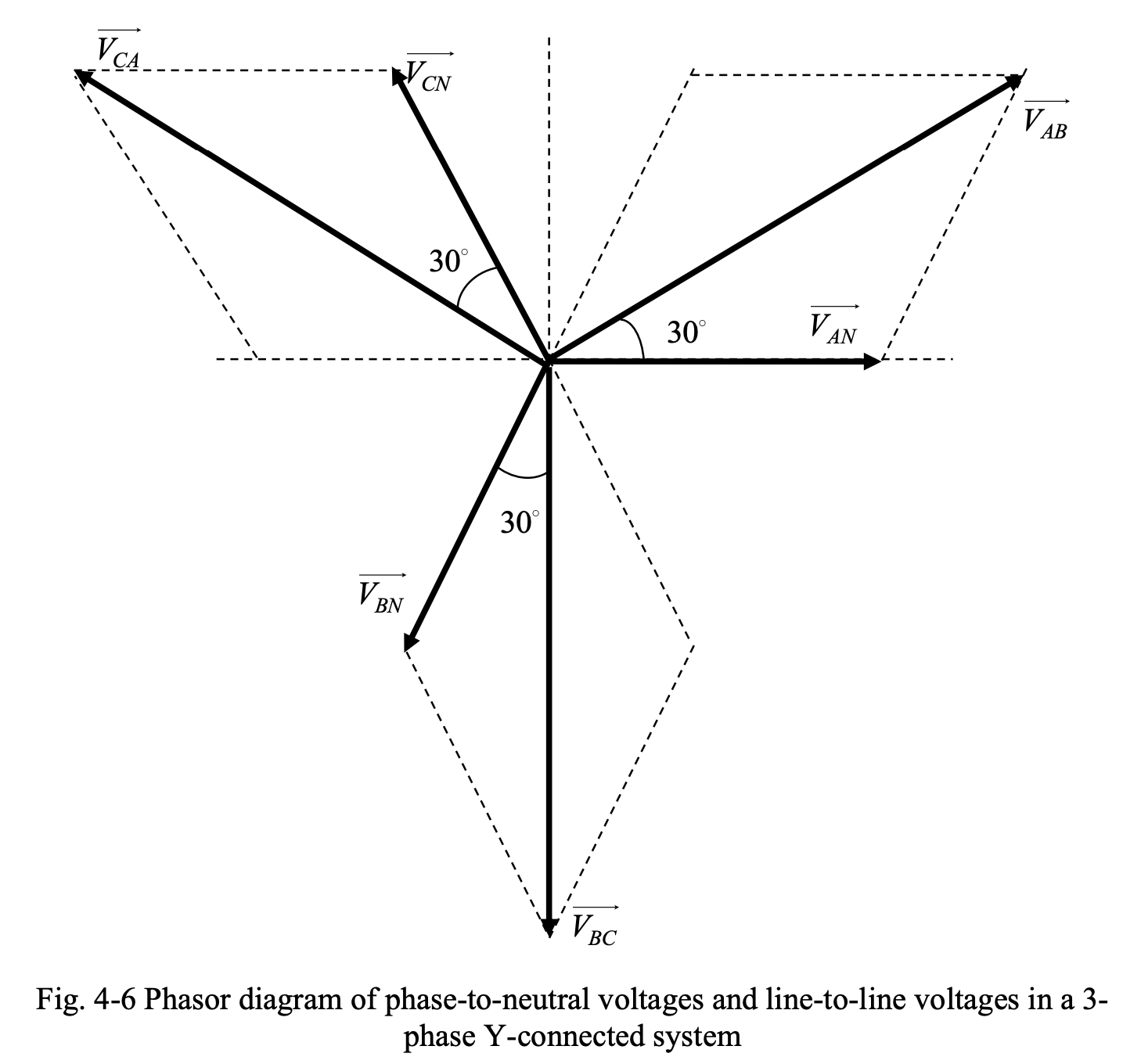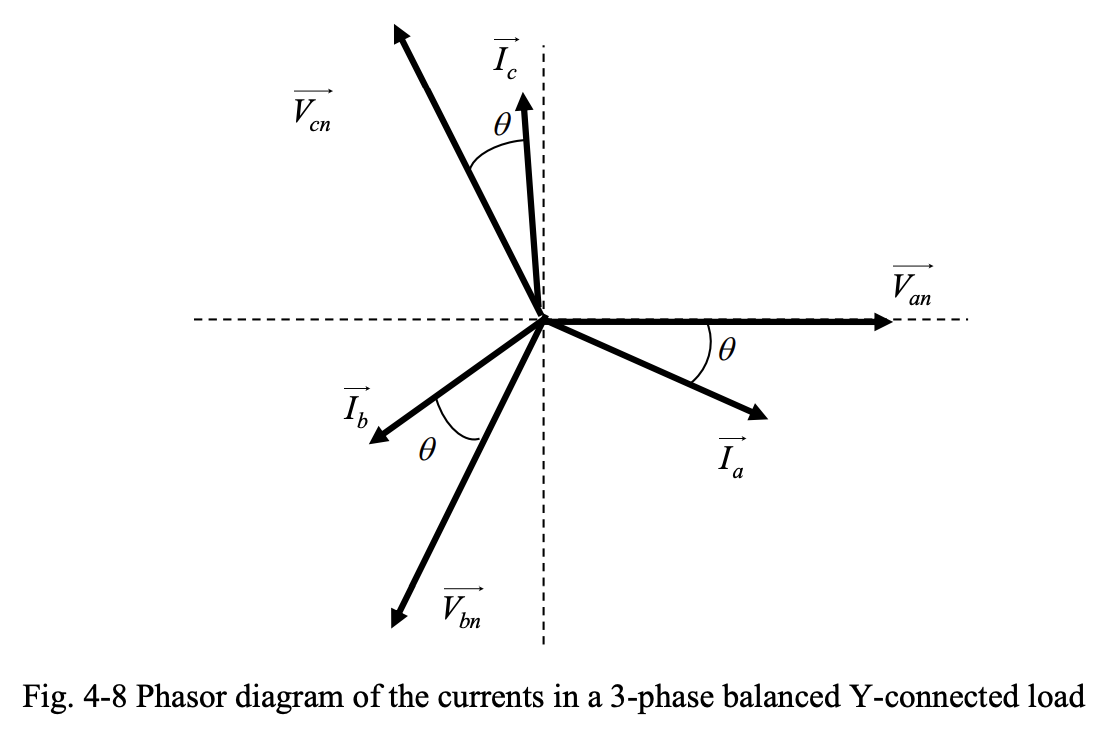In a star or wye (Y) connection style, one terminal of each phase of the source or load is connected to the corresponding terminals of the other two phases, making it a neutral point, and leaving three terminals free for connection to the rest of the circuit.


- All of the negative terminals are connected together, all the positive terminals are free
Voltage and Current Relationships
| Relationship | Value |
|---|---|
| Phase-to-neutral and line-to-line voltage magnitudes | |
| Phase-to-neutral and line-to-line voltage phase angles | leads by , e.g. leads by |
| Phase and line current phasors |
The derivations for these values are shown below.
Phase-to-Neutral Voltage
The phasor representation of the voltages of the three phases with respect to the neutral point are as follows:
where is the rms value of the phase-to-neutral voltage and phase-A voltage has been taken as a reference.
Line-to-line Voltage
From the phasors of phase-to-neutral voltages, we can find the phasors of line-to-line voltages.

From Fig. 4-6, the phasors of the line-to-line voltages can be found as:
where .
The above can be derived by doing vector arithmetic. For example, as shown in the diagram above, we have:
Loads and Currents
The relationship between the phase and line voltages will be the same as that for a 3-phase Y-connected source. Let’s look at the currents in the three phases.

We can calculate the currents. For example:
Where is the phase angle of the impedance .
Then, we also have:
where is the impedance per phase and is the rms value of the phase current. In the Y-connection style, the current in each line is equal to the current in the corresponding phase. Thus, the line current is equal to the phase current, i.e.
The same relationships hold true for the currents in a 3-phase balanced Y-connected voltage source.
Phase current vs Line current
- Phase current: The current that flows through each impedance (load) connected between a phase and the neutral point.
- Line current: The current that flows in the conductors connecting the source to the load.
Note that in a 3-phase Y-connected balanced system:
